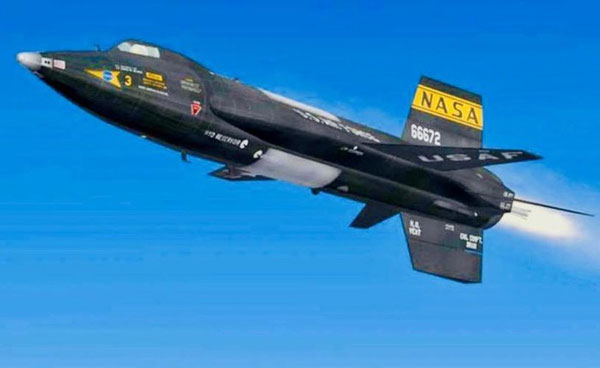The North American X-15, an experimental rocket-powered aircraft developed in the 1950s and 60s, remains one of the most remarkable achievements in aerospace history. Designed to push the boundaries of flight, this iconic aircraft played a crucial role in shaping modern space exploration and breaking new frontiers in aviation technology.

A Leap Beyond Conventional Flight
The X-15 was born out of a collaboration between NASA, the U.S. Air Force, and the North American Aviation company. Its primary goal was to explore the challenges of high-speed, high-altitude flight, and its design reflected this ambitious mission. With a sleek, black fuselage and rocket-powered engines, the X-15 looked more like a spacecraft than a traditional airplane.
Powered by a Reaction Motors XLR99 rocket engine, the X-15 could reach speeds of over Mach 6.7 (4,520 miles per hour) and climb to altitudes of 67 miles (107 kilometers) above the Earth. This put the X-15 in a unique category, as it could fly higher and faster than any aircraft before it, even reaching the edge of space.
Breaking Records and Pushing Boundaries
Throughout its operational life, the X-15 set numerous records and achieved several significant milestones. On October 3, 1967, pilot William J. “Pete” Knight flew the X-15 to a record speed of Mach 6.7, a record that still stands today for the fastest manned aircraft. The X-15 also became the first aircraft to reach the edge of space, with pilots earning astronaut wings for their flights that surpassed the 50-mile altitude mark.
These achievements were not just about setting records but also about gathering invaluable data. The X-15 program provided critical insights into the behavior of aircraft and human pilots at extreme speeds and altitudes. This data was instrumental in the development of later spacecraft, including the Space Shuttle.
The Legacy of the X-15
The legacy of the North American X-15 extends far beyond its impressive records. It was a pioneering program that laid the groundwork for human space exploration. The knowledge gained from the X-15’s flights contributed to the design of re-entry vehicles, thermal protection systems, and advanced avionics, all of which are crucial components of modern spacecraft.
Moreover, the X-15 program served as a training ground for a generation of test pilots who would later become astronauts. Notable pilots such as Neil Armstrong, who later became the first man to walk on the moon, honed their skills in the X-15 program.
Conclusion
The North American X-15 remains an icon of aerospace engineering, representing a time when humanity dared to push the limits of what was possible. Its contributions to aviation and space exploration continue to resonate today, reminding us of the bold spirit of innovation that drives us to reach for the stars. As we look to the future of space travel, the X-15’s legacy serves as a testament to the power of human ingenuity and the relentless pursuit of knowledge.






